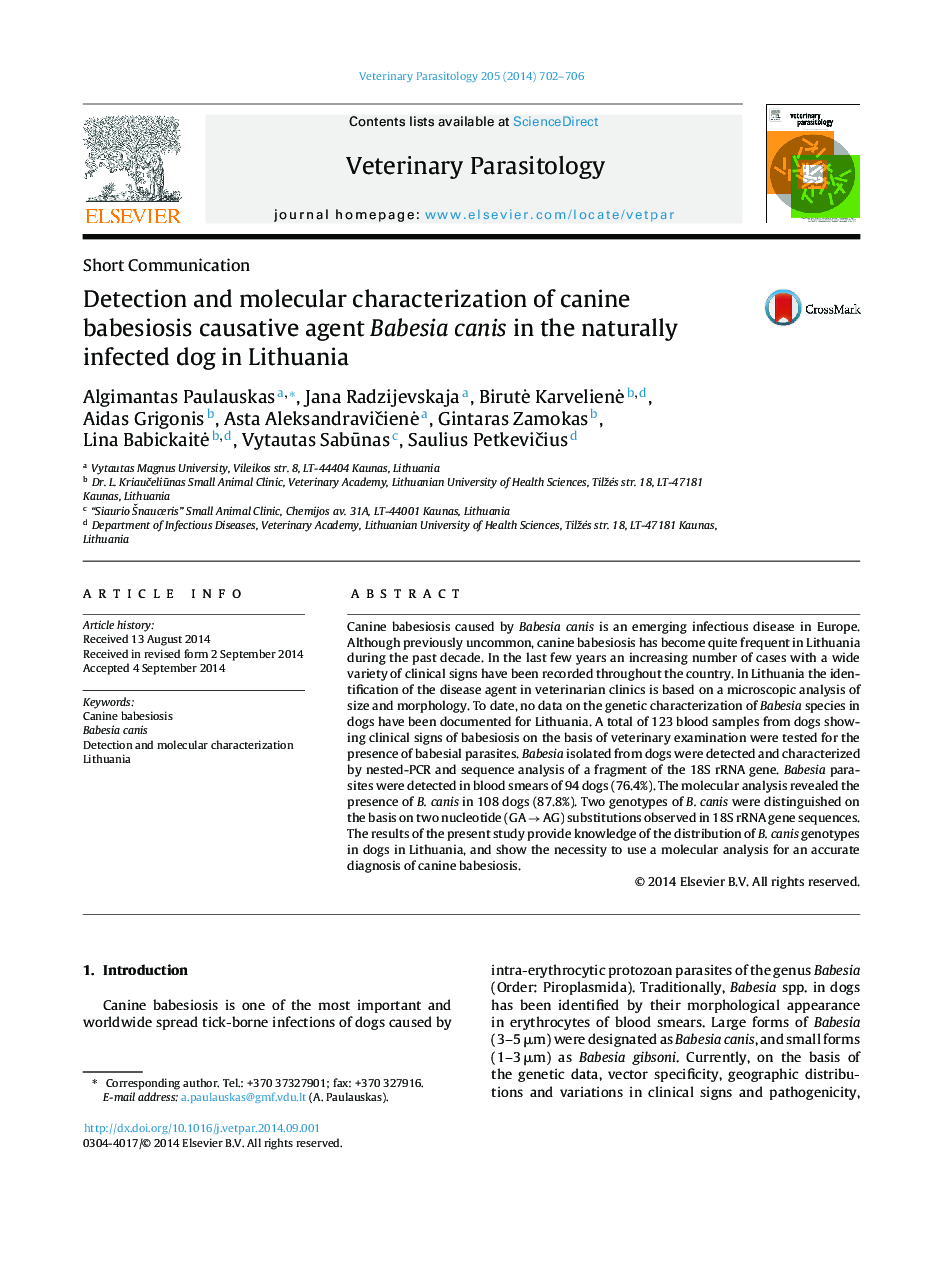| کد مقاله | کد نشریه | سال انتشار | مقاله انگلیسی | نسخه تمام متن |
|---|---|---|---|---|
| 5803109 | 1555680 | 2014 | 5 صفحه PDF | دانلود رایگان |

- First time molecular analysis was used for canine babesiosis diagnosis in Lithuania.
- Babesia sp. were detected in 76.4% blood smears of dogs with babesiosis symptoms.
- Molecular analysis revealed the presence of Babesia sp. in 87.8% dogs.
- Sequence analysis revealed the presence only Babesia canis species in tested samples.
- Two genotypes of B. canis were identified in infected dogs.
Canine babesiosis caused by Babesia canis is an emerging infectious disease in Europe. Although previously uncommon, canine babesiosis has become quite frequent in Lithuania during the past decade. In the last few years an increasing number of cases with a wide variety of clinical signs have been recorded throughout the country. In Lithuania the identification of the disease agent in veterinarian clinics is based on a microscopic analysis of size and morphology. To date, no data on the genetic characterization of Babesia species in dogs have been documented for Lithuania. A total of 123 blood samples from dogs showing clinical signs of babesiosis on the basis of veterinary examination were tested for the presence of babesial parasites. Babesia isolated from dogs were detected and characterized by nested-PCR and sequence analysis of a fragment of the 18S rRNA gene. Babesia parasites were detected in blood smears of 94 dogs (76.4%). The molecular analysis revealed the presence of B. canis in 108 dogs (87.8%). Two genotypes of B. canis were distinguished on the basis on two nucleotide (GA â AG) substitutions observed in 18S rRNA gene sequences. The results of the present study provide knowledge of the distribution of B. canis genotypes in dogs in Lithuania, and show the necessity to use a molecular analysis for an accurate diagnosis of canine babesiosis.
Journal: Veterinary Parasitology - Volume 205, Issues 3â4, 15 October 2014, Pages 702-706